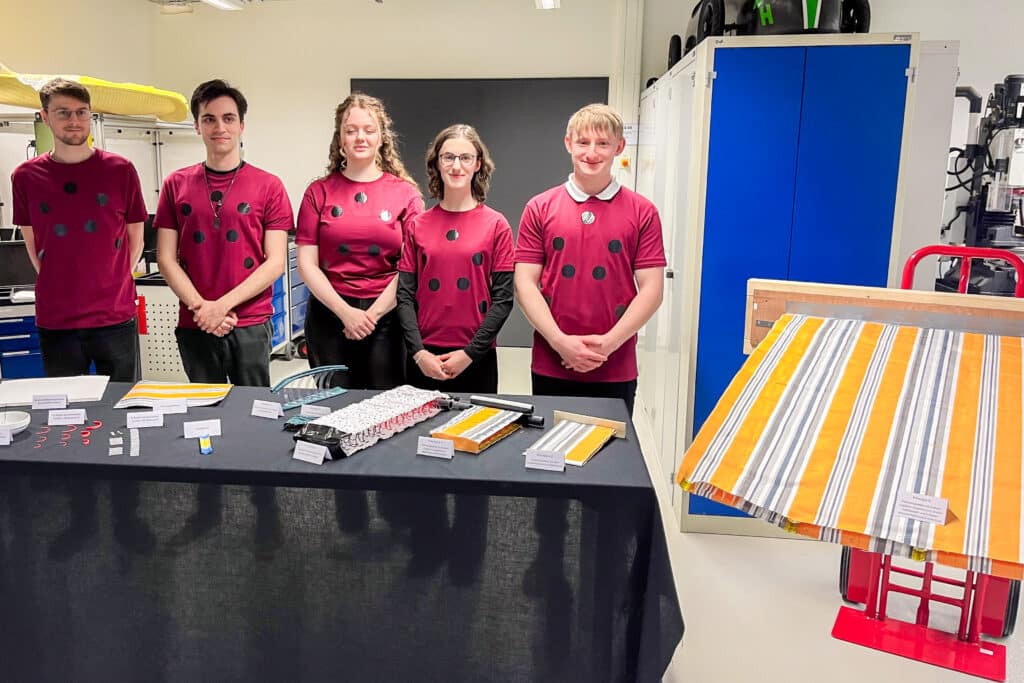‘New Horizons in textile production’ – As part of the Bachelor’s degree program in Bionics, this year’s semester project was dedicated to the innovative use of spacer fabrics. These textile materials consist of two layers of fabric connected by pile threads that give them volume. They are used in products such as stand-up paddling boards or airplane lifting cushions.
Six teams of budding bionics engineers had four months and a budget of 300 euros to develop new product ideas. To kick off the project, the students visited JEMAKO’s production facilities before realizing their ideas using modern technologies such as CAD software, 3D printers and tried-and-tested sewing machines.
They presented the results to around 120 guests, who were then able to inspect the prototypes at the exhibition stands and talk to the teams. The highlight of the evening was the presentation of the Otto Spaleck Foundation’s Audience Award, which was won by the ‘Flügelschatten’ team for their innovative ‘Wingshade’ sunshade. The design combines the principles of bat wings and ladybird wings in a heat-insulating, self-stabilizing canopy.
The other teams also impressed with their developments:
– ‘CamelCool’: an energy-efficient cooling system inspired by the cooling properties of camel fur, combining spacer fabrics and coatings for long-lasting evaporative cooling.
– ‘Grenzenlos verbinden’: a flexible, inflatable platform made of lightweight fabric, versatile in use – from rescue operations in snow, ice, or mud to event areas on the water.
– ‘Entwüster’: a sustainable ground cover made of spacer fabric with integrated seeds that promotes large-scale greening and counteracts soil degradation.
– ‘Rohrvolution’: a foldable, stable and lightweight product that combines flexibility, mobility and stability for modern applications.
– ‘Pumper’: a passive spacer fabric pump with bionic valves that can be operated without energy from external forces and offers an extremely variable, versatile pumping system.

